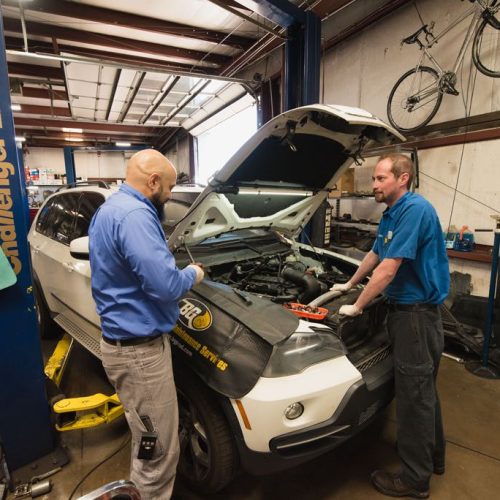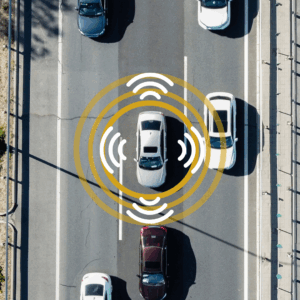Learn When to Replace Your Timing Belt and What It Is
You have probably heard stories about a broken timing belt before, or someone has warned you about checking your timing belt to make sure its good.
What makes a timing belt so important anyway?
 Let’s try to explain it as simply as possible. Your engine uses a crankshaft to rotate your pistons, and a camshaft to open and close your valves. The piston rotation and the valve open/close timing need to be precisely timed for the vehicle to run properly and to avoid the piston contacting the open valve during its rotation. The crankshaft and the camshaft (sometimes there are two camshafts) will have a toothed sprocket on the end and this is where your timing belt comes into play.
Let’s try to explain it as simply as possible. Your engine uses a crankshaft to rotate your pistons, and a camshaft to open and close your valves. The piston rotation and the valve open/close timing need to be precisely timed for the vehicle to run properly and to avoid the piston contacting the open valve during its rotation. The crankshaft and the camshaft (sometimes there are two camshafts) will have a toothed sprocket on the end and this is where your timing belt comes into play.
The timing belt also has “teeth” that will index with the sprockets on the crankshaft and camshaft. This will mechanically lock all the components together in time and prevent any component damage, it also ensures that the piston strokes and valve timing are perfectly aligned and allow the vehicle to run smoothly and efficiently. If your timing belt fails and a piston makes contact with a valve you could end up needing a new engine, and at the very least the cylinder head will need to be removed so the valve damage can be repaired. This type of work gets expensive very quickly and on older vehicles may not be worth cost of repair.
When to Replace Your Timing Belt
Different manufacturers have different service schedules but you should expect to replace your timing belt between 90k and 105k miles, or at the 7 year mark, whichever comes first.
The timing belt is made of rubber and will degrade over time regardless of mileage driven. As a general rule, your drive belts (or serpentine belt) should be replaced at the same time as the timing belt. If your drive belts are dried out and cracking it’s a good bet that your timing belt is in the same condition. We rarely see timing belts break in half due to wear, it is far more common to see the teeth shear off a section of the belt which allows either the crankshaft or camshaft to jump timing. The timing belt is protected by a cover and is not visible without some disassembly, so a worn timing belt will not be caught by a general maintenance checkout. If your car is equipped with a timing belt you should make sure you know when the timing belt was last done and when it will be due next, don’t rely on your auto repair facility to know unless they were the last shop that replaced your belt. When the belt is replaced the water pump should also be replaced. The drive belts, tensioner and pulleys, and front engine seals should also be checked and replaced if needed. It is not possible to check those components until the belt is removed so they might add some cost to your original estimate. When comparing pricing make sure to ask if those parts are included so you know if you are comparing similar jobs. If the estimate is for the timing belt alone and no other parts, it is very likely that you will be spending more than the original estimate by the time you drive your vehicle out of the shop.
Your timing belt is a critical engine component and must be replaced at the recommended service interval whenever possible. A broken timing belt will send an otherwise great older vehicle to the scrapyard and leave you looking for a new car. If you’re not sure when your timing belt was last replaced talk to the service advisors at your shop and they will help you decide the best way to proceed.
If there is any doubt, our Honest Accurate Auto technicians tend to err on the side of caution and recommend replacing the belt before there are any problems. When it comes to something as important as a timing belt you don’t want to take any chances, contact us today!



